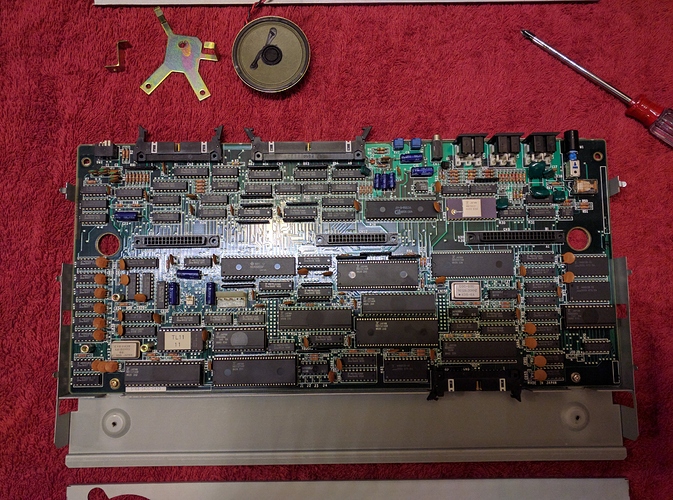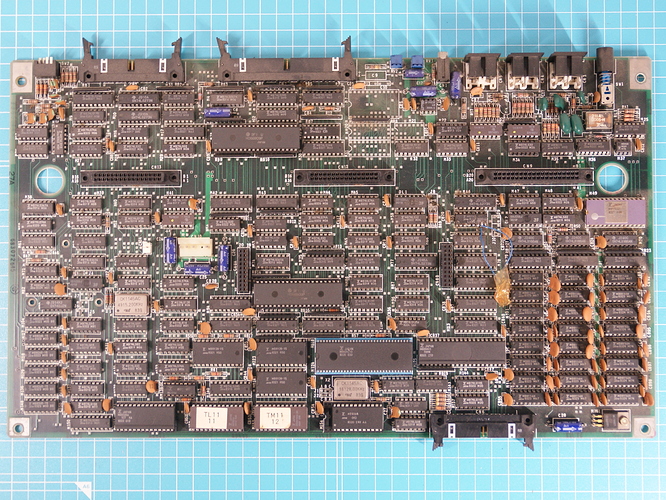Yeah, the original FM-7, released in 1982, was a fantastic computer: the brilliant 6809 CPU, a full 64K of RAM, decent keyboard and graphics, and reasonable chiptune sound (an FM synthesis card was also available, though it seems rare). And yeah, Fujitsu wasn’t particularly cost conscious: they added a second 6809 with its own RAM for graphics and keyboard I/O. It wasn’t even as cheap as an Apple II+, much less a Commodore 64. But as well as the usual MS-BASIC with DOS commands grafted on to it, it could run full multi-user, multi-tasking OSs like OS-9.
The series carried on and improved through the 1980s, culminating with the 1987 and 1988 models which had close to half a meg of RAM (plus 192 KB of VRAM), 800 KB 3.5" floppy drives, 640×400×8 colour and 320×200×4096 colour graphics, could overlay and process NTSC video input, and so on.
It, with the NEC PC-8001 and the Sharp X1 series, were referred to as the パソコン御三家 (pasokon gosanke), more or less the early '80s equivalent of the 1977 trinity in the U.S. (and perhaps Europe). And they were huge; while the Pet, Apple II and TRS-80 all existed over here, they were very niche computers; Japan had its own scene. While I have a TRS-80 Model I, a C64 and an Apple IIc, these took quite some time to find and were not as cheap as my Japanese 8-bitters. (I have what seems to have become a moderately-sized collection of the latter; I should take one out every week or two and do a little post on it.)
I’ve not had a chance to poke very extensively at the FM-7 series units I own, but what little I’ve done I’ve greatly enjoyed, and I’m looking forward to writing some 6809 code once I get some of my 6502 projects done.
The Japanese Wikipeida page on the FM-7 is, unsurprisingly, about ten times as detailed as anything available in English, but Google Translate doesn’t do too bad a job on it.


